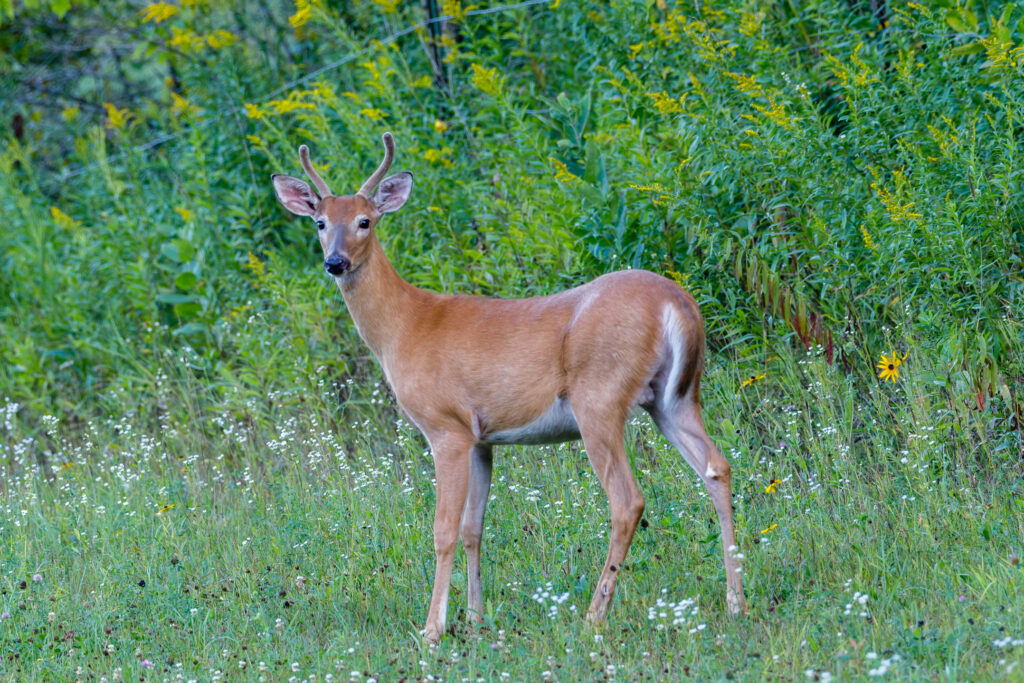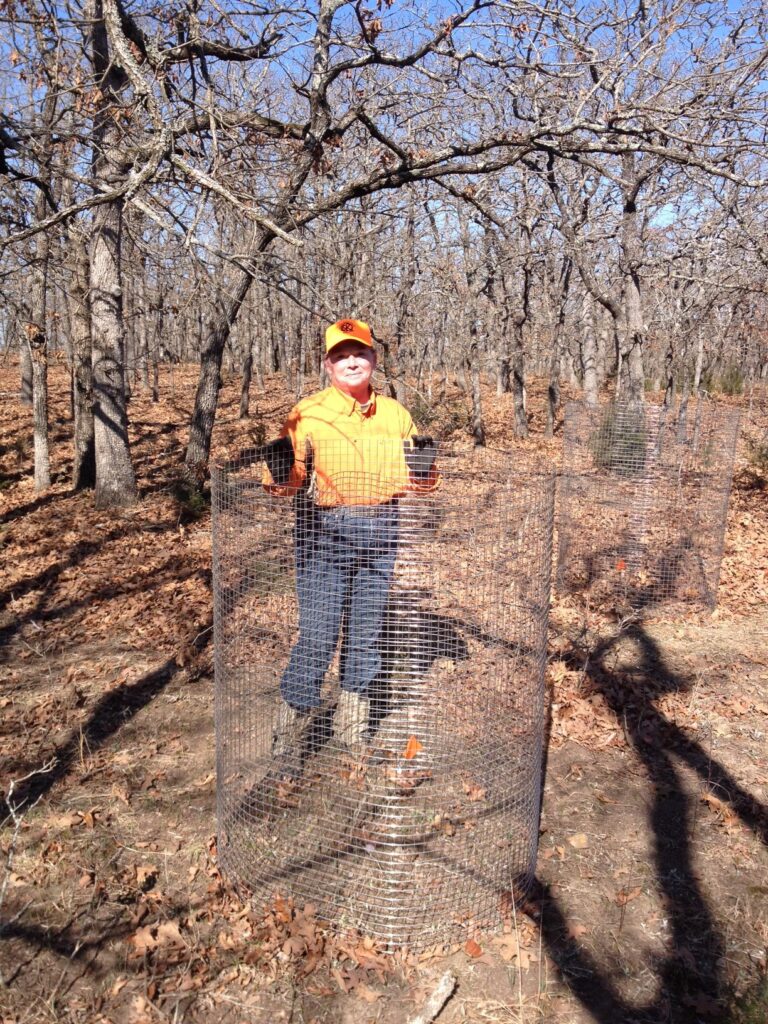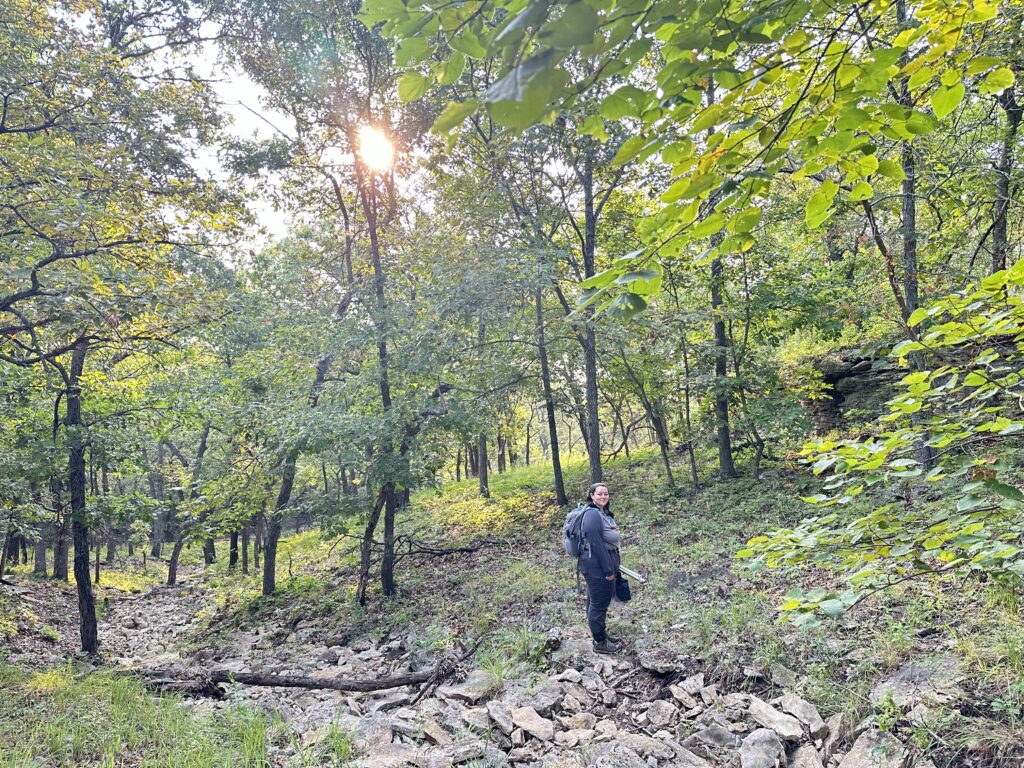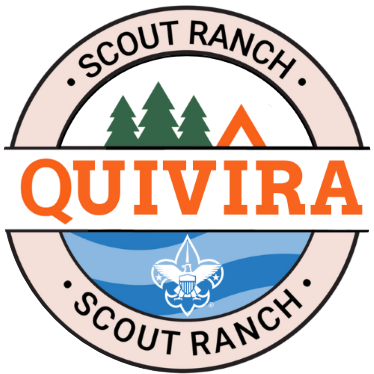Quivira Scout Ranch is home to several conservation projects that aim to increase our understanding, protect and preserve natural resources and ecosystems.

Research projects conducted by the Russell lab (Wichita State University)
Since 2016, my lab has conducted ecological research at QSR that explores effects of herbivory (consumption of living plant tissues by animals) by white-tailed deer (Odocoileus virginianus) upon Cross Timbers woodland plant communities. Our projects explore the role of deer herbivory in limiting the growth and survival of post oak (Quercus stellata) seedlings, factors that drive spatial variation in the amount of damage that deer impose on tree seedlings, and effects of deer upon the diversity of herbaceous woodland understory plant communities. Here are four examples of our work at QSR.

1. Effects deer herbivory and light availability upon growth and survival of post oak seedlings.
We are asking whether 1) deer herbivory limits growth and survival of post oak seedlings, 2) light availability limits seedling growth and survival and 3) effects of deer herbivory depend upon light availability to the seedling. In this long-term experiment, we monitor performance of post oak seedlings that are inside fenced deer exclosures vs. outside exclosures and are in small canopy gaps (lower light conditions) vs. large gaps (higher light conditions). Our results show that deer herbivory strongly reduces seedling growth, growth increases with light availability and the effect of deer herbivory does not vary with light availability.
2. Causes of spatial variation in deer herbivory intensity on oak seedlings.
Students in my lab have explored the factors that cause some oak seedlings to be damaged intensively by deer whereas other seedlings largely escape herbivory. QSR has been a key sampling location in these multi-site observational studies. We attempt to partition the influences of individual plant traits (height), neighborhood species composition (diversity and palatability of plants around the seedling) and landscape factors (proximity to habitat edges) upon deer herbivory intensity. These studies demonstrate the influential role of the species composition of other tree seedlings and herbaceous plants within 2 m of the focal seedling in making seedlings more susceptible to deer damage.


3. Correlations between deer density and understory herbaceous plant diversity.
Studies of deer effects on forests largely have addressed effects on juvenile trees and ignored effects on herbaceous plants. Our regional observational study examines correlations between deer damage intensity at a site and species composition of the herbaceous understory. In addition, the study addresses the influence of slope aspect (southwest-facing vs. northeast-facing) on the composition of the herbaceous plant community. QSR provided six of 19 sampling locations for this on-going study.
4. Roles of aboveground resources vs. belowground resources in limiting post oak seedling growth.
Cross Timbers woodlands occur at the western, driest edge of eastern deciduous forest. This project collects data on the topographic and soil environment around seedlings in the deer exclusion experiment (project 1) to understand the relative importance of belowground resources, principally water, vs. aboveground resources, light, in limiting post oak seedling growth. Estimates of light availability are based on canopy cover above seedlings. Estimates of belowground resource availability are based on an index that incorporates slope aspect, slope steepness, slope configuration, topographic position and soil depth and texture. As of April 2025, we are collecting and analyzing soil samples.

